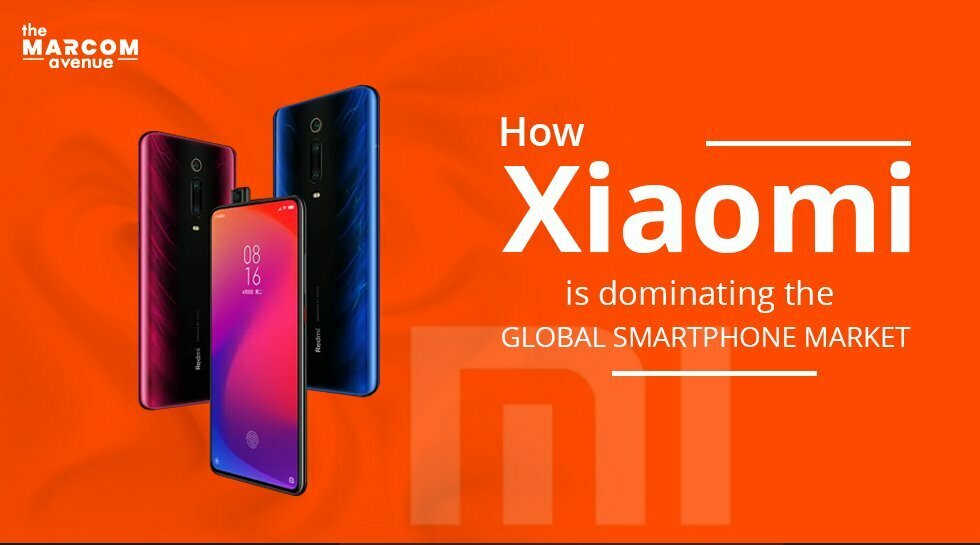
Just have a look around yourself, there must be at least 5 people around you who would be using a Xiaomi phone. Today, we will be talking about the leading smartphone brand who has been able to establish trust among users worldwide.
Xiaomi Corporation is a Chinese electronic company founded in April 2010. The company began its operations as a software company by ex-Kingsoft CEO Lei Jun, by creating a new custom ROM based on Google’s Android, MIUI. The company launched Mi 1 and Mi 2 smartphones in August 2011 in and 2012 respectively in Asia and East Asia Markets.
In 2015, Xiaomi Corporation decided to expand its business in India through major e-commerce sites and offline retailers. Xiaomi was a ground-breaking smartphone at the time in budget and was well received by Indian customers. Since then, the company has expanded in Pakistan, Spain, UK, Ireland, Austria, Denmark, Sweden, Paris, Milan and the USA.
Besides smartphones, the corporation has also launched various smart home products, fitness products, TVs, laptops, drones, Wi-Fi routers, cloud services and instant messenger services.
With the main aim of providing quality technology at affordable prices to everyone, Xiaomi has captured third place in the global smartphone market. Xiaomi’s Chief Executive Officer Lei Jun fragmented the source of revenue-generation into four segments of the market:
As the years of success passed, the revenue generation process became faster and enterprise value touched $100 Billion during the initial public offering. The company began to compete with tech giants such as Apple and Samsung.
When Xiaomi was struggling to gain profit in 2016, the CEO decided to sell products other than smartphones. They generated substantial revenue that was enough to make a strong base for a large company. Besides selling smartphones, the company also provides services like air purifiers, suitcases, televisions and much more. Xiaomi also provides paid cloud storage. Services offered by Xiaomi also include online games and TV shows. Xiaomi is also producing AI-engines which can impact the business model positively in future.
Now, let’s have a look at different categories in which Xiaomi is ruling the technology market:
With ensuring better productivity at an affordable price, Xiaomi focuses on its customer acquisition and advertising strategy. The business model of Xiaomi includes a variety of electronic gadgets and internet services that are innovative and attractive. Miscellaneous additional services and products of Xiaomi also have their fair share in helping the company generate good revenues.
Customer reliability is one of the critical strengths of Xiaomi. Xiaomi always produces affordable products. This thing still fascinates the customer towards the brand. Xiaomi provides its users with an unforgettable experience which also helps them to retain their customer base. This lets the company have more subscribers for its proprietary services such as Mi Store, Music, MI Cloud and so on. All this helps the company make good money.
Xiaomi has kept its marketing strategy minimalistic due to the cost leadership business strategy. Unlike other recent competitors like Oppo and Vivo, the mobile internet company didn’t adopt traditional marketing and utilised social media marketing to save on advertising costs.
Xiaomi adopted hunger marketing as an integral part of their digital marketing strategies. The company operated according to the emotional needs of their target customer segment by creating a shortage of supply in purpose, creating a buzz in the market and evoking desire in customers to own an MI smartphone.
Xiaomi focused primarily on the price element of the marketing mix compared to other elements of the 7P’s of marketing. Let us check out those 7Ps of marketing:
Product: The mobile internet company offered high-quality phones with latest features at unbelievable prices. The product consisted of high-quality hardware components and the final price was very low when compared to other brands.
Leveraging the power of social media marketing, the Chinese mobile internet company didn’t invest a single penny in traditional advertising. The company employed 2000 people over social media and online forums to manage its online community. Xiaomi followed a well-strategized plan to expand its online presence:
Social media marketing is a very effective and reliable source for any brand, product which is going to be launched. If social media marketing is used with a proper plan and strategy then we can see a huge difference in traffic and terms of revenue. To connect with the customers, attract engagement and build the presence of the brand online, Xiaomi developed various social media campaigns. Let’s have a look into them.
#MiIndia – A Social Media Campaign on Twitter by Mi India
To attract new buyers for Mi 3 (the newly launched Smartphone by Mi India in July 2014), the brand connected with people on Twitter use the hashtag #MiIndia. Users were asked to show their interest in the Smartphone and register themselves on the official website. One lucky winner would win a power bank from Mi India.
#GuessTheCup- A Social Media Campaign on Facebook by Mi India
To promote the Mi Bands, the brand connected with people across Facebook with a contest. The users were asked to guess the cup under which the band was present in a video uploaded. The lucky winners would get a chance to win bands from Mi India.
Redmi Note– A Social Media Campaign through Twitter by Mi India
Mi India connected with people on Twitter to promote their new Redmi Note phone and convinced them to participate in the contest. The users were asked to follow the brand and re-tweet the official launch tweet for Redmi Note. 10 lucky winners would win priority passes for the grand launch of the Smartphone.To amplify the effect, Xiaomi debuted television with its first ever TVC for the Indian market in 2015. The ad film promoted its newest offering- Redmi Note 3.
#Shot on RedmiNote7s
On Instagram, the camera quality of the Mi phones was explored and promoted in the best way. Xiaomi relied on Social media to engage with Mi fans, consumers and used the platform to share thoughts, converse with like-minded people and generate high-quality content.#ShotOnRedmi helped communicate the value of a phone for a potential consumer and also helped in retaining followers for the brand.
Note Kiya Jaye – #RedmiNote7Pro
With the launch of Note 7 Pro, Xiaomi launched a new campaign “Note Kiya Jaye” that featured their new brand endorser, Ranveer Singh who had the power to play multiple characters with his strong comical tone. Note Kiya Jaye effortlessly played out humorous scenarios while showcasing the features of the phone and innovative technology for customers.Xiaomi left no stone unturned to promote its product. They used 360 degree marketing strategy slowly and steadily. They have also conducted several influencer marketing campaigns to promote its product among the youth.
Xiaomi’s business strategy depends upon time and trends. Here are some key-takeaways from the strategy that we must study and implement to further growth:
Conclusion
Truly, Xiaomi is a perfect example of a start-up business. It has been a unique blend of business strategies, digital marketing strategies and social media marketing strategies which has transformed the business in just 5 years of its inception. Cost competitive strategies have been boon for the brand. There are opportunities for Xiaomi to become the world’s No. 1 smartphone company as the company is already giving a tough competition to other competitors.
 Rise of Generative AI in Production Media- Impact and Future
Rise of Generative AI in Production Media- Impact and Future
 A Guide to Successful Digital Performance Marketing
A Guide to Successful Digital Performance Marketing
 How Does Consumer Behaviour Impact PPC Campaign Success?
How Does Consumer Behaviour Impact PPC Campaign Success?